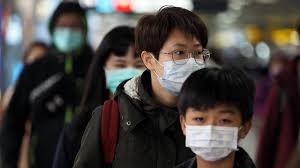Lifting restrictions in March could lead to new peak of cases in August, study suggests
Relaxing physical distancing and school closures in Wuhan too soon could fuel a second wave of Covid-19 infections later in the year, scientists have said.
A study published in the Lancet suggests lifting restrictions in March would lead to a surge in case numbers that would peak in August. It predicts that maintaining the restrictions until April would delay a second peak until October, which would relieve pressure on health services in the intervening months.
The study serves as a reminder that there is no quick and easy exit strategy from the lockdowns that many countries have imposed.
The models the study uses are not directly applicable to other countries, but the overall conclusion probably applies everywhere, the researchers say.
“Physical distancing measures are very useful and we need to carefully adjust their lifting to avoid subsequent waves of infection when workers and schoolchildren return to their normal routine,” said Yang Liu, a research fellow at the London School of Hygiene and Tropical Medicine and co-author of the study. “If those waves come too quickly, that could overwhelm health systems.”
The study is in line with documents published by the UK government’s scientific advisory group for emergencies (Sage), which state that physical distancing measures could need to be in place for at least half a year to be effective and will probably need to be relaxed and tightened periodically to reduce the impact of subsequent waves of infection.
Using the latest data on the spread of Covid-19 in Wuhan and the rest of China, the study analysed different scenarios for lifting the intense control measures introduced in Wuhan in mid-January. Schools have been closed ever since and only about 10% of the workforce – roughly corresponding to healthcare workers, police and other essential government staff – have been at work.
The study found that physical distancing measures were likely to be most effective if a staggered return to work were to start at the beginning of April, potentially reducing the median number of new infections by 24% up to the end of 2020 and delaying a second peak until October.
Kiesha Prem, also of the London School of Hygiene and the lead author, said: “The unprecedented measures the city of Wuhan has put in place to reduce social contacts in school and the workplace have helped to control the outbreak. However, the city now needs to be really careful to avoid prematurely lifting physical distancing measures, because that could lead to an earlier secondary peak in cases. But if they relax the restrictions gradually, this is likely to both delay and flatten the peak.”
The study team used mathematical modelling to simulate the impact of extending or relaxing physical distancing measures in Wuhan.
Tim Colbourn, an epidemiologist from University College London who was not involved in the study, said the findings had crucial implications for policymakers, and country-specific models could help governments to calculate how to ease restrictions over time.
“Given many countries with mounting epidemics now potentially face the first phase of lockdown, safe ways out of the situation must be identified,” he said.
The Guardian
 Lebanese Ministry of Information
Lebanese Ministry of Information



